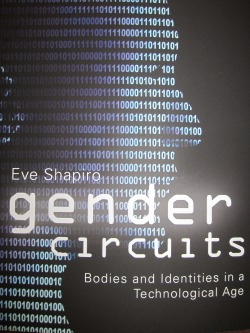 Blue Dog From the title, one might assume that I am depressed, but actually it's quite the opposite. A few weeks ago my boss suggested a book that I might be interested in reading, and eventually, blogging about. She then lent me her copy. It has been sitting here on my makeshift desk since that time. Tonight when I got home, I was considering what I might read and blog on when I remembered the book was somewhere on my desk, buried under other papers. I dug through my piles until I found it, kicked back in my recliner, and started leafing through the text. The name of the book is Am I Blue and it's a collection of short stories (I'm sure there is quite a bit of truth to many) edited by Marion Dane Bauer.
The first story in the text is entitled "Am I Blue" by Bruce Coville, and at first I considered skipping that one because it is by a man. I just figured I might connect better with one written by a woman. On second thought, however, the title of the collection came from this one story, so I decided to give it a read.
 Am I Blue I was not disappointed. In short, the story is about a 16 year old guy who gets a "fariy" godfather after taking a beating by a bully who accuses him of being a "little fruit." The tale ends with our protagonist's second wish that from coast to coast anyone who has a hint of "gayness" in them turn a shade of blue so everyone can see that they exist in harmony with gays and lesbians daily and suffer no ill will because of it.
You give that a moment or two of thought and you realize what a powerful message it is. Makes me wonder how many of those people who tormented me when I was a teenager (and didn't have any idea about my sexuality) would have turned a shade of blue. More than I probably think. Now I am not afraid to proclaim myself bluer than blue!
"Far from being the reflection of an inner drive, [Gray] argue[s] that youth identities are cultural assemblages that work with the materials on hand" (551-567). So Mary L. Gray, in her book Out in the Country, does not see identity as an individual thing, but as a cultural, social construction as posed by theorists like Barbara Ponse and Anselm Strauss. Gray posits that she investigates "rural queer-youth identities as performative, socially mediated moments of being . . . ." (584-601).
In light of these statements, then, I would like to look at one particular statement she makes later in this chapter. Gray notes, sadly, that there were in her study only "small numbers of young women and youth of color of different gender available and/or able to participate . . . ." (665-682). The lack of racial diversity, she believes, "superficially reflects the ethnic makeup and distribution typical of rural communities in these regions" (665-682). The regions she mentions here are the rural areas of Kentucky and it's bordering states: what is known as the Central Appalachian Region (or my stomping grounds).
So why, out of 34 participants, did only 11 identity as women? The answer to this is pretty obvious to me but still interesting. As Gray states, "the rural young women [she] met were 'highly aware that a lot was at stake for them because of their desire'" (665-698). Not only are these women identifying as lesbians, but they are actually admitting to having sexual desires.... period!! A no-no in our culture. Women are not suppose to have sexual desires for the opposite sex, much less the same sex. Gray comments that "several young women [she] met were willing to talk about their experiences but were unwilling to document them or consent to have them included in this research for fear of 'blowing their cover' as more that a few young people put it" (682-698).
Here is what is sad. I still feel this way when I am at home in the Blue Ridge mountains. I struggled long and hard on whether or not to "facebook friend" people I knew in HS because I knew I would be outted. I would be blowing my cover and possibly subjecting my family to.... well, I'm not sure what they might be subjected too. Maybe it was just an excuse for me, but in the end, I decided that if these HS friends wanted to "reconnect" with me, they would just have to learn who I really am. Let 'em "unfriend" me if they can't deal with it!!
This concludes the first chapter where Gray has set up the theories that she uses in her case studies and the methods she incorporates. I look forward to the rest of Gray's text and seeing how rural youth see themselves as members of an LGBT community.
Ok, so the section I read tonight was not totally about tattoos, but the case study at the end of the "Preview" chapter of Eve Shapiro's Gender Circuits was, and it is really what I found the most interesting about this section.
To be fair though, I should have read another page last night because Shapiro discusses the impact of challenging gender norms by discussing drag communities and how many begin to play with gender once they have been a part of that community of a while. Interesting stuff, to be sure. And Shapiro also talks about how technologies such as Second Life (yes she did discuss SL) allow people to bend gender rules and play with identity.
But the case study on tattooing is where I want to take this. Again, brings it home for me in a big kind of way. Shapiro does an excellent job of discussing, briefly, the history of tattooing. But more interesting is the meaning or meanings behind tattoos and what they say about us. Probably the most obvious thing is that tattoos have never been and still are not looked kindly upon for women. Shapiro argues that "tattoos on men and women are interpreted in vastly different ways boosting masculinity while threatening femininity" (40). This got me thinking about my own tattoos, those of my partner, and those of my niece. If you look at my partner's tattoos, they pretty much tell a story on their own. There is a pooh and tigger, which needs some explanation, and two Indian themed tattoos which pretty much stand on their own. A fourth needs explanation. People see it and do not understand what it means at all. My niece's are probably what I would call the epitome of a woman's tattoos. She sports a lady buy, maybe a butterfly, and one associated with her two girls. These are the types of tattoos that I can see being appropriate gender scripts for a woman. My two tattoos are unique. They did not come from the wall of a tattoo parlor, and as such, if you don't ask, you won't know what they mean. One of them matches my partners and thus the tattoo she has that needs explanation. The other one people mistake all the time, but people rarely enter into a discussion with me about it.
So what do my tattoos say about my gender? I hope nothing. They are very personal to me and not meant to scream femininity nor masculinity; they are meant to say something about my inner being. While I am thoroughly enjoying Shapiro's text, I hate to think of all of this gender scripting and what it says about me.
It's late, I'm tired, I'm outta here.
Ok, so tonight I decided to start a book I have been looking forward to for quite some time. The book is Eve Shapiro's Gender Circuits: Bodies and Identities in a Technological Age. There are basically five chapters, and each one approximately 40+ pages. So I have decided to break each chapter up into two sections to make this a little easier to absorb. I'm a one of those people who reads slowly and needs time to digest what I read. So tonight, I started with the "Series Foreword," "Preface," and the first 20 or so pages of "Preview: Gendered Bodies and Identities in a Technological Age."
Blogging becomes difficult for me tonight. I could just chat away about how well Shapiro presents the basics of gender, describing how we now know it is socially constructed and giving detailed explanations of terms in boxes that are set off in gray, allowing you to skip these if you already know the meanings. I could also discuss my excitement when Shapiro writes "I have endeavored to write in a jargon free manner" (xv).
But what I wouldn't be blogging about is what I learned about myself, both past and present, as I read Shapiro's text. She introduced me to a term tonight I had either never heard before, or it had never been explained in a way that resonated with me. The term is gender scripts. The things that we learn as we grow up that cue people into our gender identity. The way we walk, the way we talk, the way we dress, our every action is read by the people with which we come in contact. This is where the light bulb went off in my head, and I'm not talking no 25 watter here. I'm talking full halogen strength. Every since I was a kid, I've been referred to as a boy, or later in life, sir. It use too, and I guess still does, piss me off every time it happens. But it finally dawned on me as I was reading about gender scripts that the reason people always call me sir is because I do not act out the correct scripts for a woman. I always thought the people were just idiots, but the reality is that they were and are reading the scripts correctly, just not looking closely. I don't like labels. I don't like "acting" out one way or another. But society has set the norms for these scripts and there is nothing I can do about that. I can't conform because I only know how to be who I am.
So while I know I will enjoy Shapiro's text, I just wonder how many more surprises are in store for me about myself. I never imagined this blogging thing would get so personal!!!
|



 RSS Feed
RSS Feed

